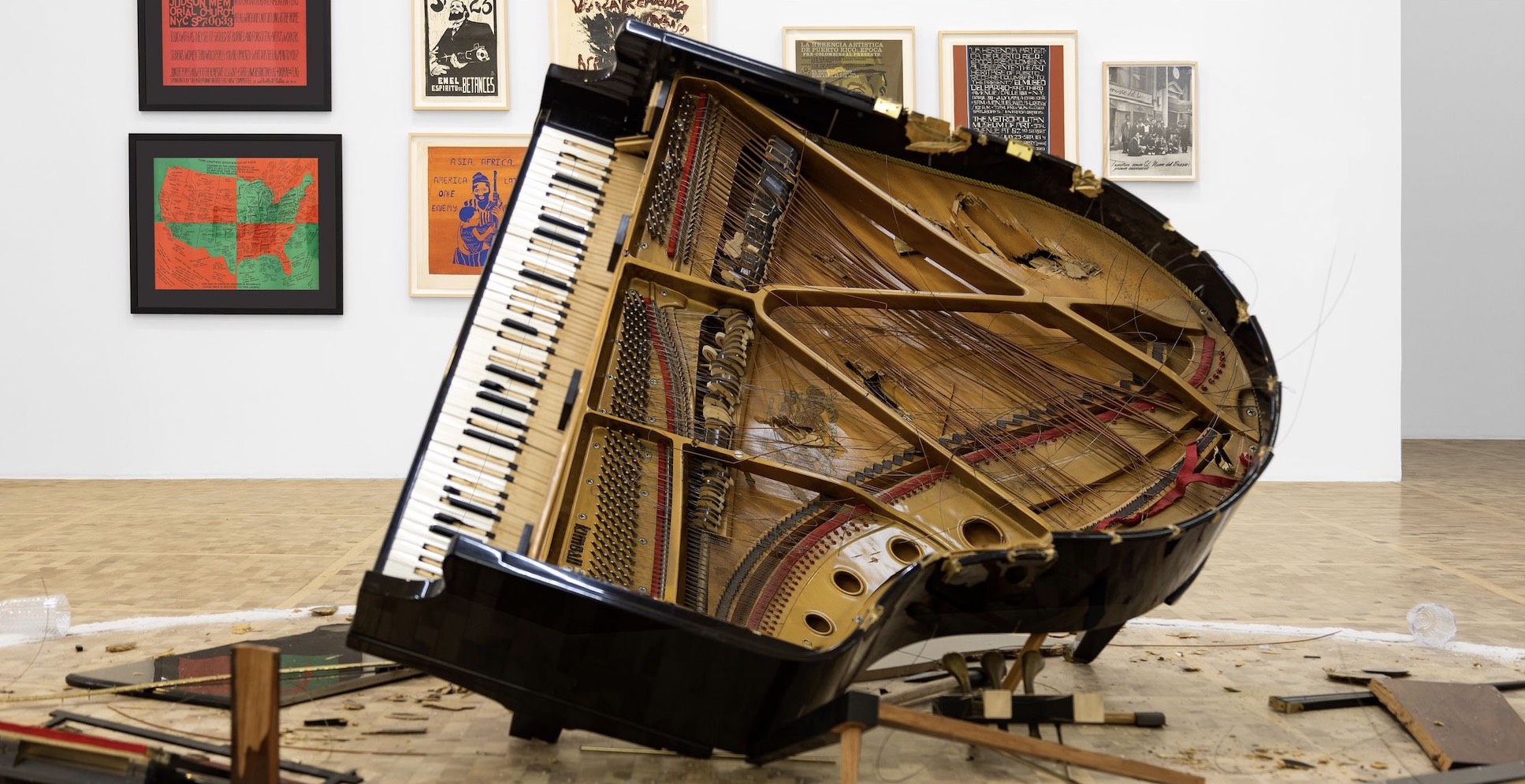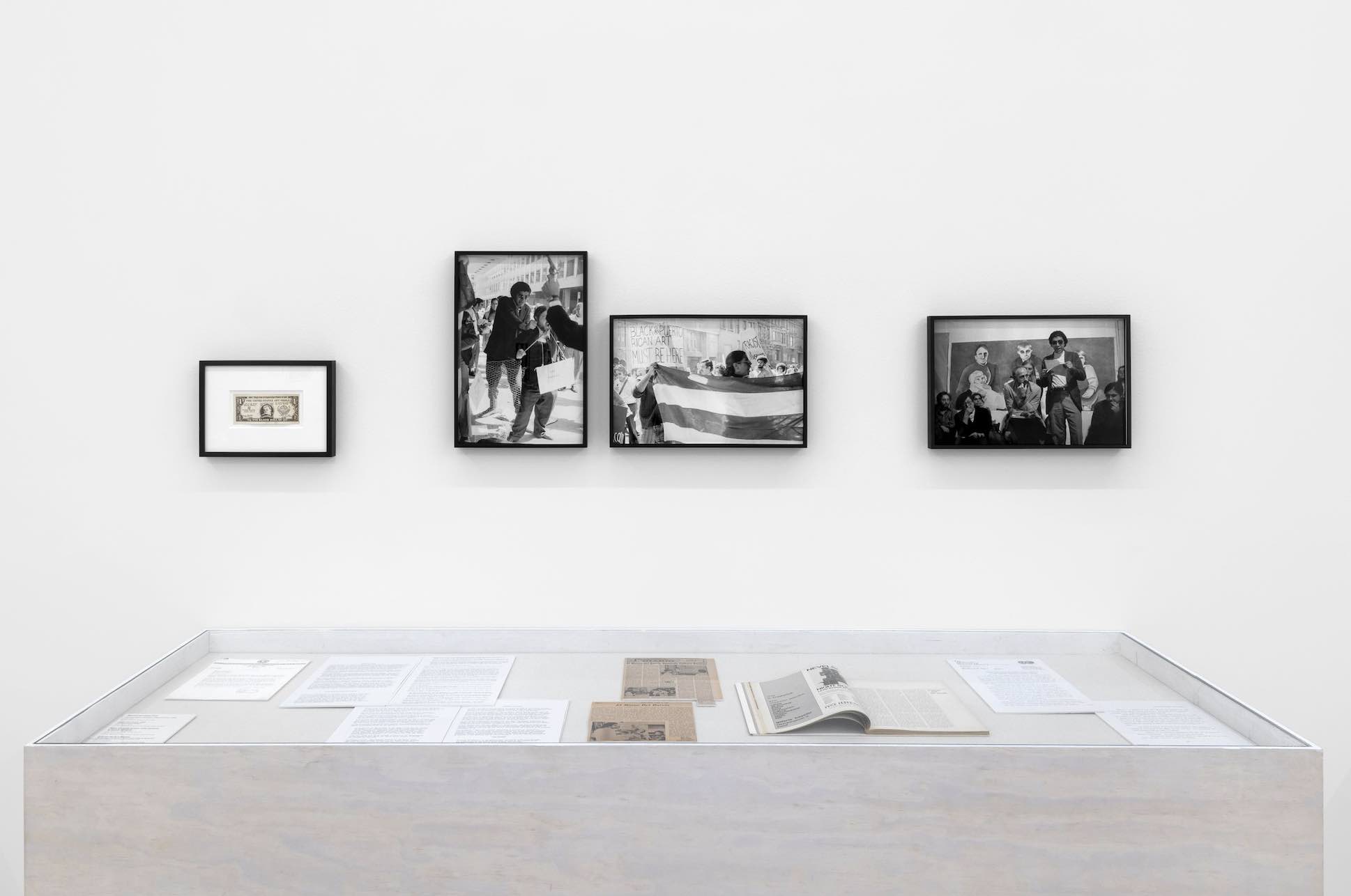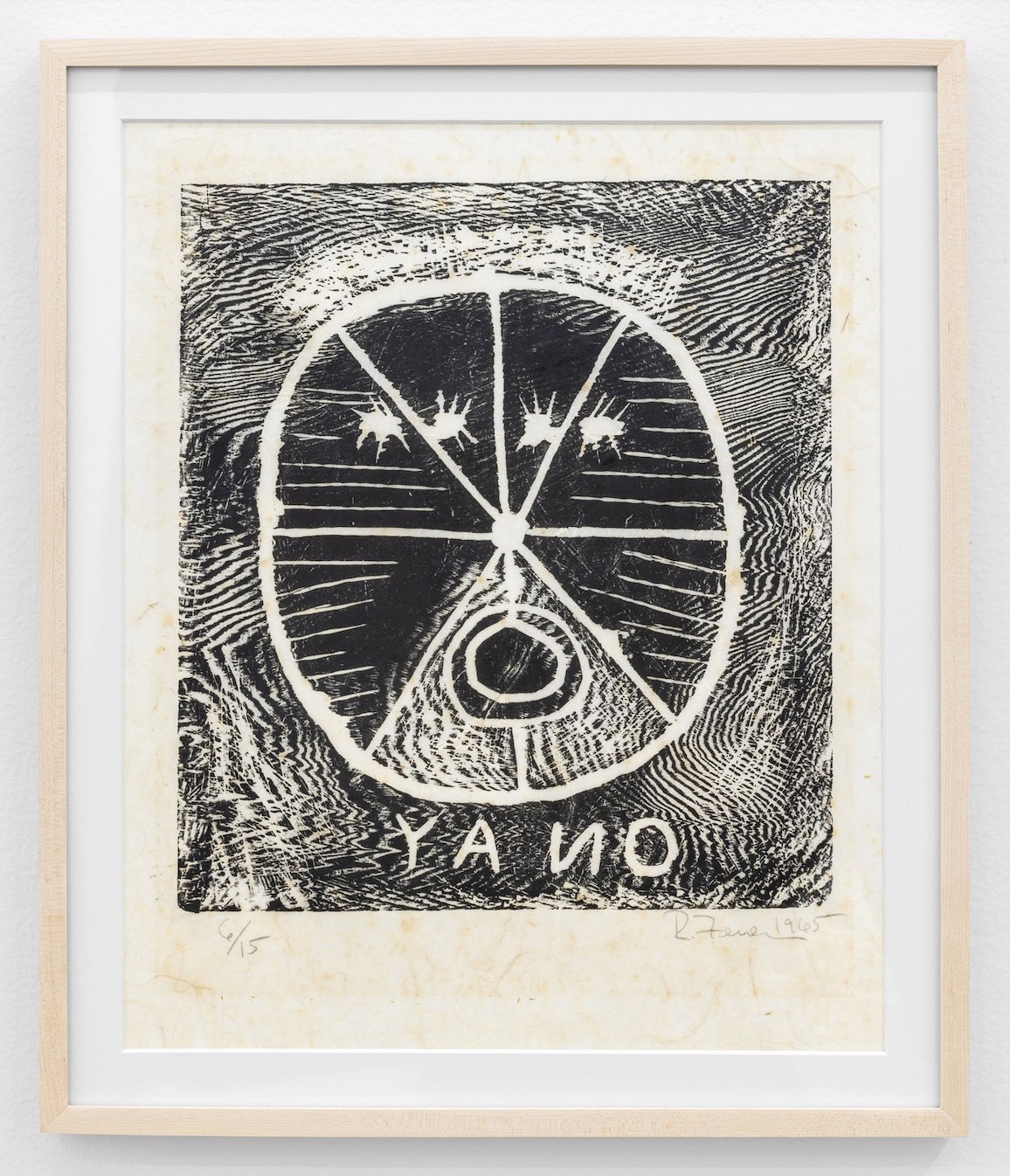
Review
Raphael Montañez Ortíz: A Contextual retrospective
by Wendy Cabrera Rubio
At the Museo Tamayo
Reading time
7 min
What does art exist for? Who does art exist for? Is there such a thing as a mainstream in art? What’s the relationship of races and classes with art? In western culture, is there such a thing as a modern and contemporary art that stands apart from the long world history of native and folk art? What relationship do race and social class have with the world history of art? What distinguishes the patriarchy from the matriarchy in all this? These and many more questions are raised and need to be resolved in order to clear the air of the great deception perpetuated by the institutionalization of racism by Eurocentric and European and North American historians and art historians.
Raphael Montañez Ortíz (1977)
The exhibition was first presented at El Museo del Barrio, a project founded by the artist.
We are inside a dilapidated upper-class North American room: armchairs, mattresses, a piano, and even a movie western are left with their entrails exposed in such a way that their economic, social, and psychological value is obvious. Montañez’s father warned him, “You’ll betray me if you don’t become a worker like me.”*1 His son betrayed him by carrying out the reverse operation: his physical work made the manufacture of goods visible to us.
The objects selected to be destroyed were chosen for their meaning and function, always those serving the construction of the home of the heteropatriarchal family, the basis of the capitalist system. By freeing the commodity from its use value, its exchange value is made explicit. Montañez Ortíz undoes the concealment of labor and exploitation intrinsic to all merchandise by alienating the author from the object and re-sacrilizing the object itself. This exorcism of the specter of capitalism takes place as a liminal and ritual—hence unrepeatable—act, to which we can have access only via the vestige, the detritus: what is shown as a piece of art.

An example of this is the piece Cowboy Newsreel where the movie western operates as the embodiment of North American masculine identity. An instrument for disciplining and interpreting gender roles based on social classes. Montañez’s axe, the links between racism, capitalism, sexism, and colonialism—all these become visible. In an interview with Scott MacDonald*2 about the movie, the artist affirms that what least interests him is a redemptive cleansing: “releasing the evil.” It is not a cure or a healing of the “indigenous wound,”*3 but rather the staging of an exorcism that confronts the impulses of life and death.
These ideas contrast with the gallery text, where Montañez’s practice is described as consisting in “radical gestures that seek the healing potential of art and propose a return to indigenous and ancestral knowledge.” A statement that is repeated in the museographical text, in the section dedicated to Physio-Psycho-Alchemy, emphasizing the “healing power of ancestral forms of knowledge.” This abstract narrative, in addition to nullifying complex differences, requests the healing of western urban centers in exchange for empathy regarding their way of life, while the political situations of many indigenous communities are in danger like never before, and any mechanism for protecting their resources is silenced in the face of public and private interests, such as capitalist extraction.

In the second room we find one of Montañez’s recent works, part of a series of assemblages that the artist has made over the last decade.
This work, carried out during the pandemic, highlights the link between indigenous genocides throughout the European invasion of America and the impact of Covid-19 on the Latinx and non-white populations of the United States. Montañez relates this work to colonial history, the recent health crisis, and his own mortality, making evident the links between colonialism and late capitalism. The conquest is read in terms of the notion of commodity, reduced to matter.
Within the same room we find archival material such as Decolonization and Guerrilla Tactics, which addresses his Puerto Rican origin and his participation in the founding of the El Museo del Barrio. It also documents his engagement with other groups active at that time, such as the Art Workers Coalition, the Guerrilla Art Action Group, the Taller Boricua, and the Judson Gallery. Nevertheless, the contributions are left out of context and, like much of the material, without translation: even his founding text Destructivism: A Manifesto remains inaccessible to those who do not speak English.
On the other hand, I also wonder how fair it is to request these translations from a museum that belongs to the INBA (National Fine Arts Institute), which every year reduces the budget for museums and where subcontracted employees are the ones most affected; several museums, including the Tamayo, intermittently close exhibitions owing to lack of a budget to pay security.*4 At the end of last year, the National School of Painting, Sculpture, and Printmaking was on strike because of a lack of payment to the management’s staff.*5 It is no secret that for several presidential administrations various public institutions have been collapsing and are in increasingly worse conditions. The current context encourages privileging collectors and the art market, since there is no public money and there are no foundations defending the common interest.

The destruction of public institutions further marginalizes the voice of racialized and non-privileged subjects, who have historically been made invisible within the history of western art—a problem that cannot be solved only with representation; the indifferences of history require a more in-depth debate, allowing us to make visible the mechanisms of exclusion, the result of the fundamentally racist and classist structure.
In an interview with Pedro Reyes, Montañez wonders, “What about all the other artists who are not Anglo? What about Latinos, Puerto Ricans, all the women in the arts? There are also certain sociological concerns: that artists should have insurance, that some artists don’t have steady jobs. If you’re packing groceries into a cab, you’re a waiter or a waitress, or you’re living with your parents and not making any money from your art, how can you, as the artist, be protected within this framework?”*6
Raphael Montañez Ortíz: una retrospectiva contextual can be visited until April 2, 2023, at the Museo Tamayo.
Translated to English by Byron Davies
*1: Interview with Raphael Montañez Ortíz, April 18, 2009. As he explained it, his father’s position was that “you can only trust someone who has calluses on their hands.”
*2: Scott MacDonald, “Media Destructionism: The Digital/Laser/Videos of Raphael Montañez Oritz,” in Chon Noriega and Ana Lopez, eds., The Ethnic Eye: Latino Media Arts (Minneapolis: University of Minnesota Press, 1996): 183-207.
*3: Chon Noriega, “Sacred Contingencies: The Digital Reconstructions of Raphael Montañez Ortíz, video artist,” Art Journal (December 1995).
*4: Israel Sánchez. (2022). “Impago a custodios obliga a cerrar salas del Tamayo” (“Non-payment to custodians forces the closure of Tamayo exhibition rooms”). February 2, 2023, in www.reforma.com.
*5: (2022). “Estudiantes del INBAL exigieron rehabilitación de escuelas y frenar recortes al arte” (“INBAL Students Demand Rehabilitation of Schools and a Stop to Cuts to Art”). February 2, 2023, in www.infobae.com.
6: Javier Rivero Ramos (2020). RMO: Raphael Montañez Ortíz. El Museo del Barrio, New York: RM.
Published on February 26 2023